
views
X
Research source
Burning unseasoned (green) or even partially seasoned wood in your stove or fireplace will cause creosote build-up in your chimney, which can lead to a chimney fire at the worst, and a lack of fire or a roomful of smoke at best. Every homeowner reliant on wood should know how to season wood.
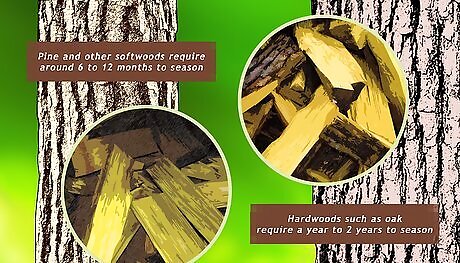
Before drying, know the properties of your wood. The duration of seasoning depends on the wood and for deciduous trees, when the tree was felled. The sap of deciduous trees moves to the roots in the winter, so such trees felled in winter have a much lower moisture content to begin with, and so will be seasoned more quickly. In general, pine and other softwoods require around 6 to 12 months to season, while hardwoods such as oak require a year to 2 years. However, this rule of thumb has exceptions, so knowing the tree type and its water content is important. Surface water will usually evaporate quickly; the concern is the moisture content within the wood. Wood such as shagbark hickory, cherry and black locust will gain little benefit from air drying, as they have low moisture content. On the other hand, wood from such trees as hemlock, cottonwood, American elm and sycamore will benefit from long drying times. Many other tree types are variable. Importantly, there isn't any point seasoning wood longer than it needs to be. Over-dried wood will have less energy as volatile esters in the wood evaporate. These waxy substances contain a great deal of heat energy, so it is a mistake to think that longer is necessarily better. A special instrument can be hired or purchased that tests the moisture content of wood (usually known as a "wood moisture test meter" or similar).

Gather and stack wood at the right time of year. With the exception of wanting to gather deciduous trees when their sap is lowest during winter, gathering and seasoning wood during the summer season makes good sense because you can take advantage of the warm weather to start drying out the wood. In areas with little rainfall during summer, open air storage is also a viable option; any rain that does fall will usually replace sap and as the water evaporates faster in the heat, the fuel will dry faster.
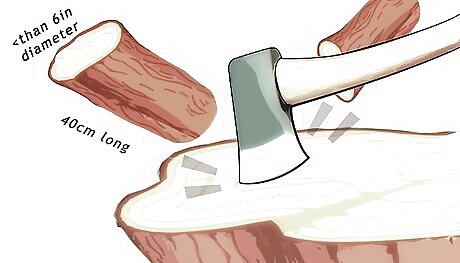
Chop the wood in readiness for storage. It's best to get the pieces down to no more than 6-8 inches (15cm-20cm) in diameter. Eighteen inches (45cm) long is a common size, though 16 inches (40cm) is the correct length for a face cord and will fit better in smaller stoves.
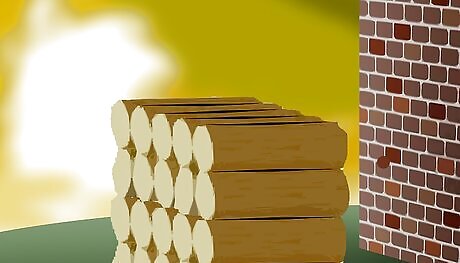
Store the wood outdoors. Do not store wood inside; if there are termites, you don't want them getting at your house!
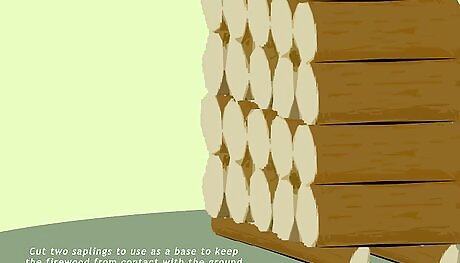
Stack the wood so it isn't sitting directly on the ground or right up against a wall. If you don't have a woodshed, cut two saplings to use as a base to keep the firewood from contact with the ground. Pallets are also a great alternative. If you don't have or don't want to make side supports, you can stack the ends by turning the direction of wood 90 degrees with each layer and the end stacks will be self supporting.

Allow space between the stack and a wall to allow air to move. Air circulation is an essential part of the seasoning process, to ensure that the wood dries. Ideally, you would have a moisture barrier such as a tarp below the wood, and/or have it spaced up off the ground to allow air flow.
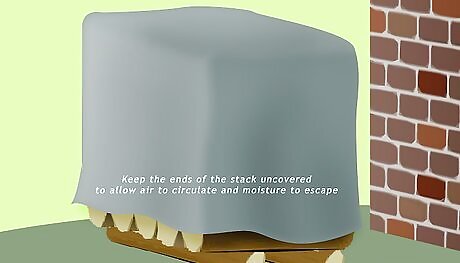
Ensure that the top of the wood is covered to allow rain (or snow) to run off without soaking the wood. However, keep the ends of the stack uncovered to allow air to circulate and moisture to escape. Bark acts like a lid on firewood, offering natural protection. On split wood, stack the wood with the bark on the bottom to allow the wood to dry faster. If you are storing the wood without cover, stacking with the bark on top will prevent some of the rain from soaking into the wood. There are two theories on the covering of wood during the seasoning process and you must decide for yourself which theory you wish to follow. One theory is that already stated––cover the wood to prevent the rain and snow from entering the center of the stack and gathering there. However, within the firewood community, another theory holds that you do not have to cover your wood at all, ever. Just leave it out there in the weather and it will season just as well as if you covered it. This theory has its supporters and the they are quite sure it works just as well as covering your pile. Perhaps divide your wood and try an experiment with both ways.
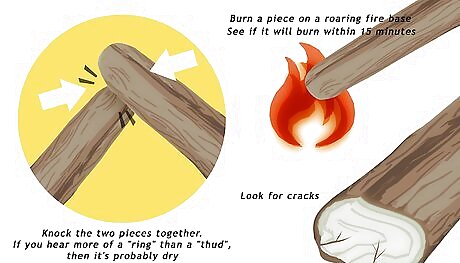
Check for wood dryness. You can use the wood moisture test meter as mentioned earlier, if you have access to one. Alternatively, try these simple test: 1. Pick two pieces of wood that you think is dry. Knock the two pieces together. If you hear more of a "ring" than a "thud", then it's probably dry. 2. Also, check for radial cracks at the ends of the wood, which indicate dryness. 3. Burn a piece on a roaring fire base. If three of the sides begin to burn within 15 minutes, the fuel is dry.



















Comments
0 comment